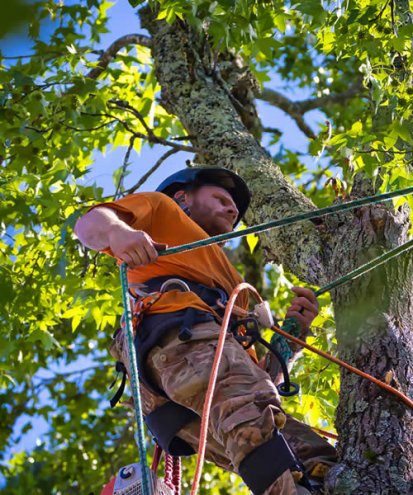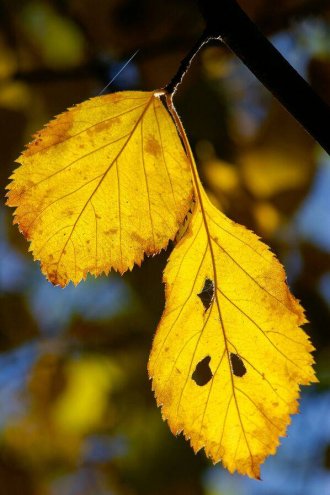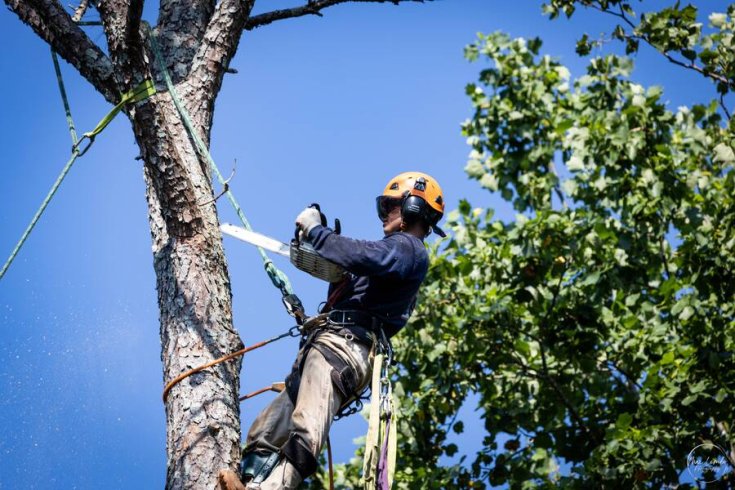Menu
Trees are more than towering entities in our landscapes; they are essential to our ecosystem, providing shade, oxygen, and aesthetic beauty. However, the decision to cut tree roots, whether driven by the need to construct, clear space, or address potential hazards, comes with a series of dangers that demand careful consideration. At Driscoll Tree Service, we leverage extensive knowledge and expertise, ensuring quality services. Let’s look at the risks associated with cutting tree roots and the significance of seeking help from professional arborists.

Tree roots are a vital anchor, securing trees into the ground while facilitating water and nutrient absorption. The intricate network of roots extends far beyond what meets the eye, playing a pivotal role in the overall health and stability of the tree. Altering or cutting tree roots disrupts this delicate balance, leading to potential issues.
Cutting tree roots can compromise the tree’s stability. Roots provide the foundation that prevents trees from toppling during storms or high winds. Disrupting this balance could lead to unexpected falls that could damage property, endanger lives, and disrupt the surrounding environment.
Severing tree roots can severely affect the tree’s ability to absorb water and nutrients from the soil. This can lead to a weakened tree, making it more susceptible to diseases, pests, and even death. Trees may exhibit signs of stress, such as wilting leaves and diminished growth.
When tree roots are cut on one side, the tree might lean or tilt in the opposite direction. This uneven weight distribution can cause structural imbalances, rendering the tree unstable and hazardous.
Trees sometimes respond to root cutting by initiating new root growth. While this might seem like a solution, it can lead to uncontrolled root sprouting, creating a thicket of new roots that further disrupt the soil structure and increase the risk of tripping hazards.
In response to root cutting, some trees regrow to compensate. However, this causes an uncontrollable tangle of new roots, undermining soil stability and increasing the risk of tripping hazards. The best way to avoid such scenarios is to hire a trusted tree care company for routine maintenance. We leverage innovative equipment and proven strategies to mitigate regrowth and other subsequent hazards.

Given trees’ complex nature and root systems, it’s imperative to seek help from a professional service when considering tree removal and root cutting. While DIYers can handle minor projects, here are reasons to work with a tree care company.
Professional tree services employ proper techniques when cutting tree roots to minimize the impact on the tree. These techniques include strategic pruning, root barrier installation, and promoting healthy root growth.
Arborists prioritize the preservation of trees whenever possible. They can offer alternative solutions, such as root redirection or selective pruning, to achieve your goals without endangering the tree’s well-being.
Many areas have legal regulations surrounding tree removal and root cutting. Professional tree services are well-versed in these regulations, ensuring compliance while minimizing environmental impact.
Cutting tree roots is not a decision to be taken lightly. The potential dangers of destabilizing trees and compromising their health are significant. Consulting professional tree services is crucial for making informed choices that balance your needs with preserving these vital natural assets. Contact us at the Driscoll Tree Service and schedule a consultation with our team of experts.

Why My Trees Look Bad Trees are alive and need regular care. Like most living things, they can get injuries or diseases. While it is not always easy to identify signs of infection or infestation in trees, you may have…
Read More
Will Pruning a Diseased Tree Help It Survive? Detecting signs of deterioration in your trees can be quite frustrating, especially if irreversible. Luckily, scheduling routine maintenance inspections with a professional tree care company helps detect trivial signs of infection or…
Read More
Why Trees Are So Important to Your Community As Arbor Day approaches, it reminds us of the significance of trees in our communities. Besides aesthetic appeal, trees are vital in enhancing the quality of life for humans and wildlife. From…
Read More
Yellow Leaves in Summer The sight of trees adorned with vibrant shades of red, orange, and yellow during fall is a natural spectacle that always captivates. However, when those same trees display yellow leaves in the summer, it may be…
Read More
What Exactly Is an Arborist Report? Trees are a valuable addition to our environment, providing oxygen, curb appeal, shade, and a habitat for various species. However, when it is time for tree removal, especially protected ones, there are legal and…
Read More
When most people hear the word pruning, they probably think of someone snipping away at tree branches with big clippers. While that’s technically true, tree pruning is way more complex - and interesting - than just cutting random limbs. Pruning…
Read More
Learn About Hiring Forestry Mulching Services Forestry mulching is the ultimate win-win for nature enthusiasts, landowners, and anyone looking to responsibly manage overgrown vegetation. This innovative process transforms trees, bushes, vines, and other plants into valuable mulch that not only…
Read More
How Professional Tree Services Handle Large or Hazardous Trees Large or hazardous trees can quickly turn into serious threats on your property, and dealing with them safely requires far more than basic yardwork. You might look at a towering trunk,…
Read More
The Best Way to Remove a Tree Stump When a tree is cut down for whatever reason, the stump left behind is not just an eyesore but also a safety hazard on your premises. Waiting for the stump to decompose…
Read More
Hey there, Metro Atlanta neighbors! Whether you’re battling Bradford pears that shed like a husky in July or nurturing a century-old oak that’s seen more history than Peachtree Street, the tree care specialists at Driscoll Tree Service have some tips…
Read More